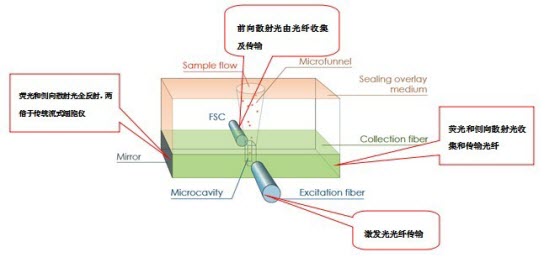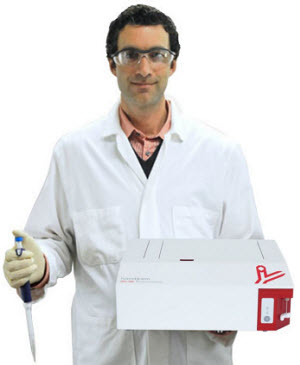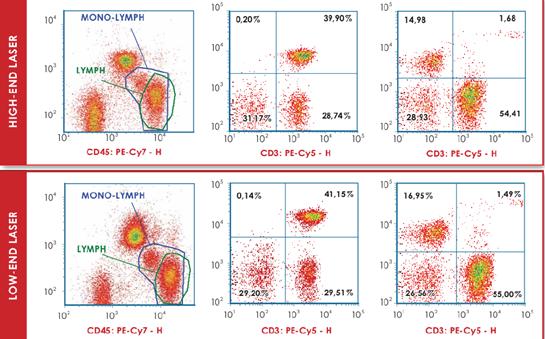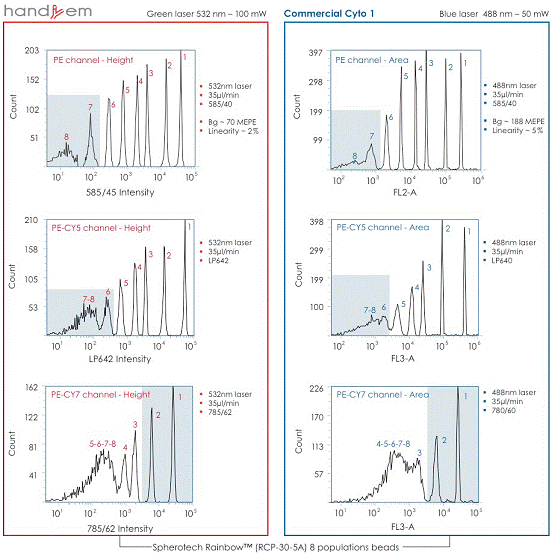The principle, characteristics and application fields of Handyem's new generation of personal flow cytometry
2022-09-27 10:05:43
Abstract: Handyem launched the revolutionary new generation personal flow cytometer HPC-100 in 2013 . The HPC-100 was developed by the National Institute of Optics in Canada and the Canadian Aerospace Agency for the health monitoring of space station astronauts. Its core technology is the "F3FiberFlowFluidicsTM" flow chamber designed with fiber optic microfluidics, which can achieve sheath-free, ultra-small, anti-vibration performance.
At present, flow cytometry has gradually become a routine analysis technique for life science research. Flow cytometry has been expensive, expensive to maintain and use, and complicated to operate, which is a constraint that restricts it to become a conventional instrument. In recent years, miniaturized personal flow has emerged, which has greatly compensated for the shortcomings of traditional streaming and has gradually become an indispensable instrument for laboratories. Its main features are low price, simple operation, low maintenance and use cost, but the small flow instability is its biggest problem.
In 2013, Handyem launched the revolutionary new generation personal flow cytometer HPC-100. The HPC-100 was developed by the National Institute of Optics in Canada and the Canadian Aerospace Agency for the health monitoring of space station astronauts. Its core technology is the "F3FiberFlowFluidicsTM" flow chamber designed with fiber optic microfluidics, which can achieve sheath-free, ultra-small, anti-vibration performance.

Figure 1: Patented F3FiberFlowFluidicsTM Flow Room
The HPC-100 has three innovations that are not available in other flow cytometers.
The first is earthquake resistance. The fiber optic intervention flow chamber avoids the detection error caused by the reflection of the reflected and focused spot in the traditional flow cytometer flow chamber. The HPC-100 is the only flow cytometer with shockproof performance and is the most stable flow cytometer.
Followed by sample recycling. The design of the sheath-free fluid is not the first of Handyem, but the cell recovery is a bold breakthrough in the flow. The sheath-free solution can prevent the cells from being broken and ruptured. After the detection, the cells can be taken for microscopic observation or re-culture.
The third is a small volume. The HPC-100 is a large-scale collector of flow miniaturization. It is only one-third the size of the current mainstream small flow cytometer and can be flexibly placed in a safety cabinet or glove box.

Figure 2: Volume of the HPC-100
In addition to innovations in hardware design, the HPC-100 also focuses on the quality of data and is highly convincing compared to traditional large-scale flow cytometry data. As shown, the high-end laser data for a large flow cytometer configuration is compared to the same sample data for an economical laser with the HPC-100 configuration (Figure 3).

Figure 3: Flow cytometry direct detection of mononuclear-lymphocytes after hemolysis of fresh peripheral blood
The HPC-100's optional 532 nm laser is the best excitation wavelength for exciting PE labels. Sensitivity and resolution comparison using SPHERORainbow microbeads (SpherotechPNRCP-30-5A) with other commercially available 488 nm blue laser flow cytometers . The beads were detected at a flow rate of 35 ul/min, and the fluorescence signals of PE, PE-Cy5 and PE-CY7 channels were collected by 585/40, LP642 and 785/62 nm filters, respectively.
The results show that the linearity of HPC-100 is about 2%, which is much better than the 5% linearity of other flow cytometers equipped with 488 nm blue laser (Figure 4). The CV of the smaller peak shows more accurate data. In addition, HPC-100 is capable of detecting approximately 70 MEPE (equivalent phycoerythrin molecules), superior to 188 MEPE for flow cytometry.
The 532 nm laser has an advantage over 488 nm excitation when it is used to detect PI and PE and coupled dyes.

Figure 4: Comparison of PE performance between 532nm and 488nm lasers
HPC-100 has a wide range of applications (including but not limited to)
• Apoptosis/cells (Annexin, caspase, PI, mitochondrial membrane potential, cell surface death receptor, calcein)
• Cell cycle analysis and ploidy
• Cellular uptake test
• CFSE (cell transport and proliferation)
• Formation of NO and superoxide in cells
• Immunohistochemical staining (CD4, CD8, etc.)
• Multi-parameter immunophenotypic analysis
• GFP and YFP expression, TXP cell FOXP identification
• Transduction
• Cell surface marker analysis (HLA-A, B, C)
• Phenotypic analysis of human bone marrow mesenchymal stem cells (stem cells)
• Phosphorylated histone h2xa levels
• T cell phenotype, cell surface markers (CD4, CD8), analysis of granzyme B
• Monocyte and macrophage phagocytic activity
• Calcium mobilization
Keywords---Fish Curd, Side Dish, Sauce, Pot, Boil
Ingredients:
Fish Curd, Side Dish(Dried Day Lily, Rice Noodle), Tomato Sauce
Directions:
1. Add 500ml of water along with tomato sauce pouch into a pot to boil.
2. Add the side dish into the pot and wait for 2-3 minutes
3. Add the fish curd into the boiling soup until they float(1-2minutes). Then pour the soup and the fish curd into a bowl before serving

Vegan Tofu Fish,Vegan Fish Tofu,Fried Fish Tofu Recipe,Food Fish Tofu
Guangzhou Luxe Seafood Enterprises Ltd. , https://www.seafoodluxe.com